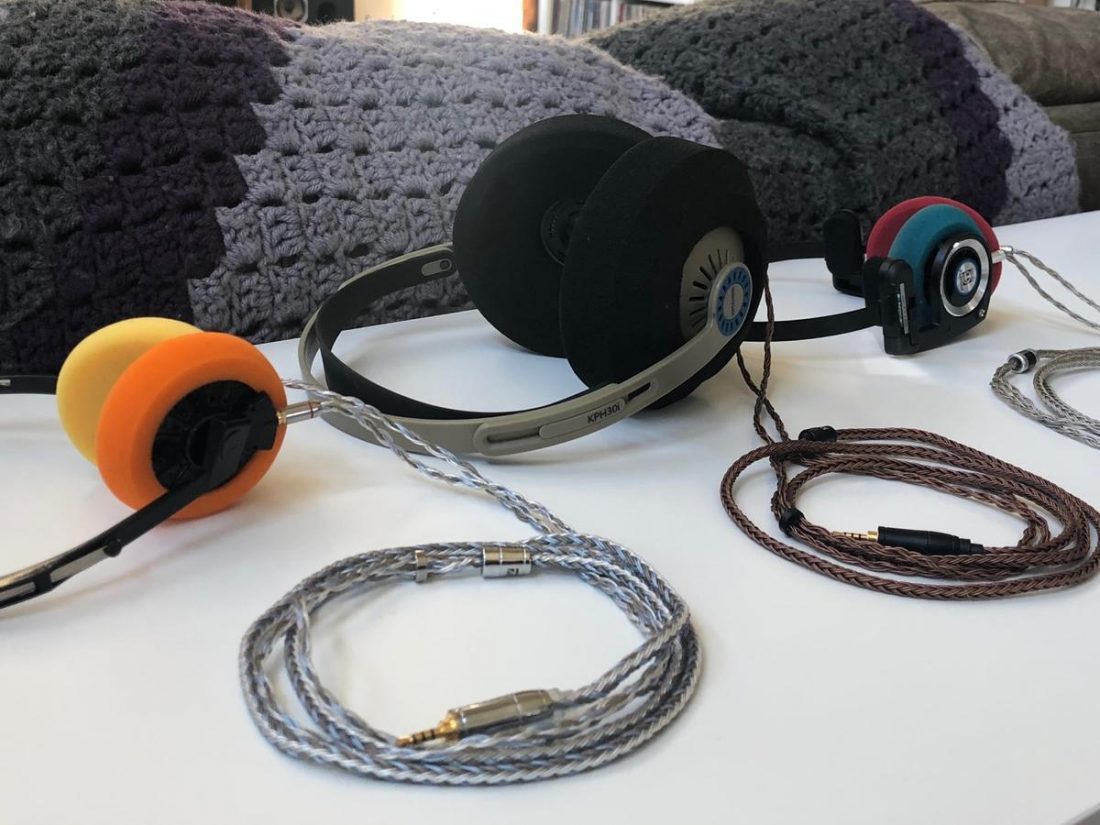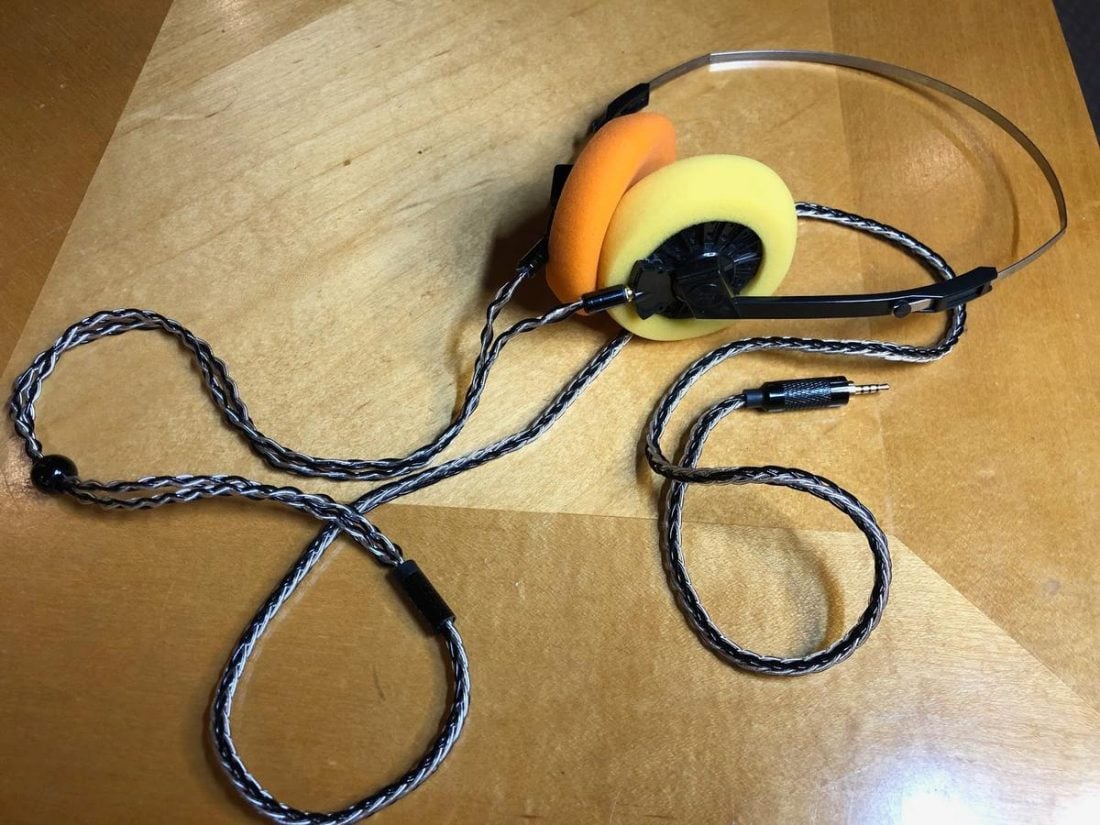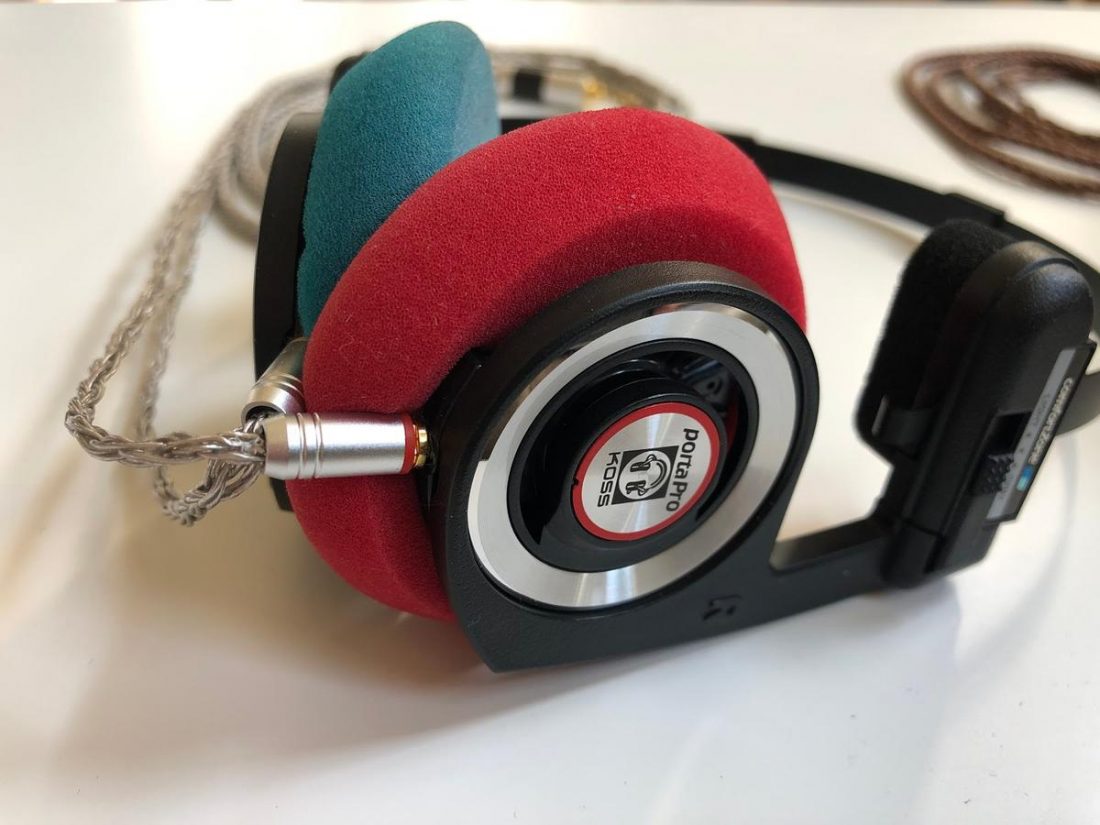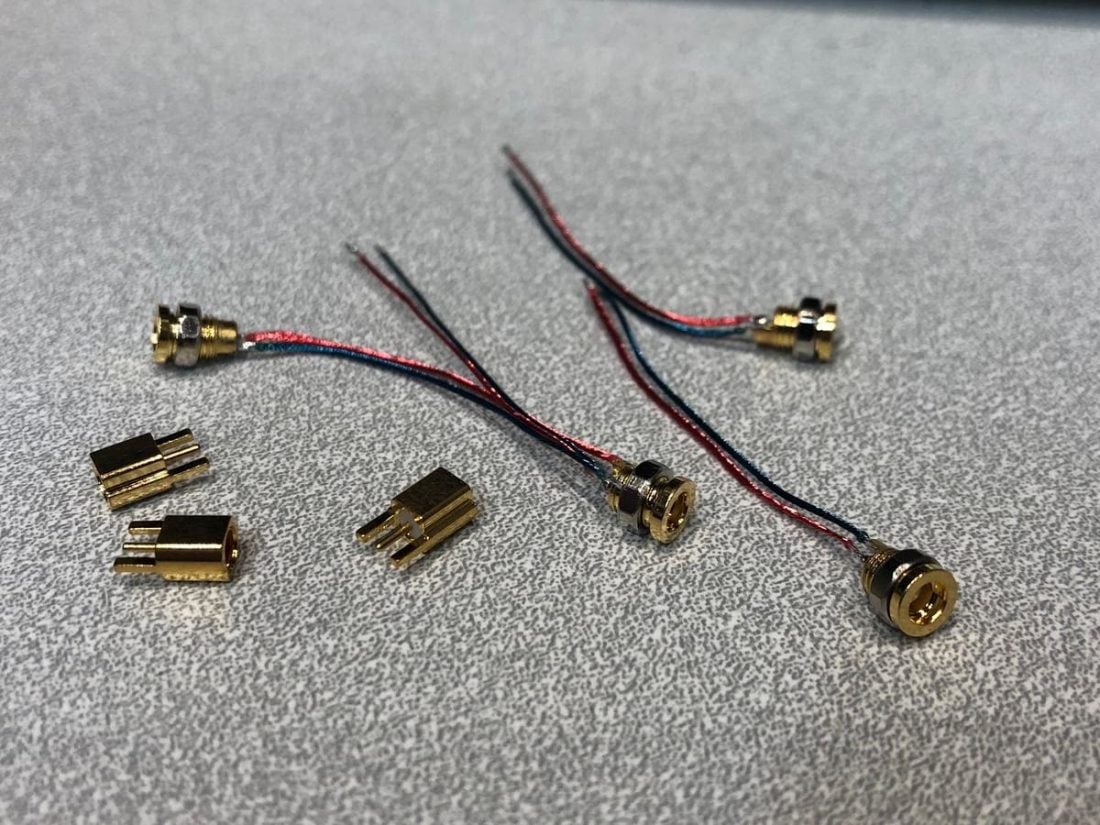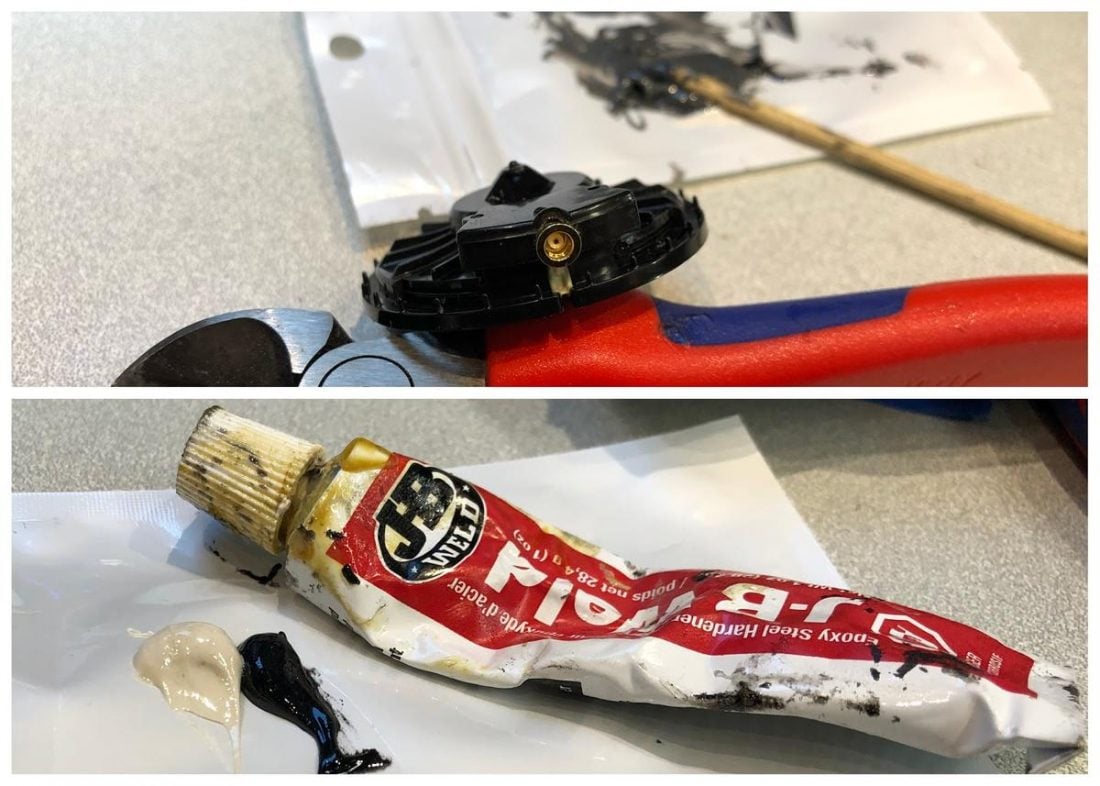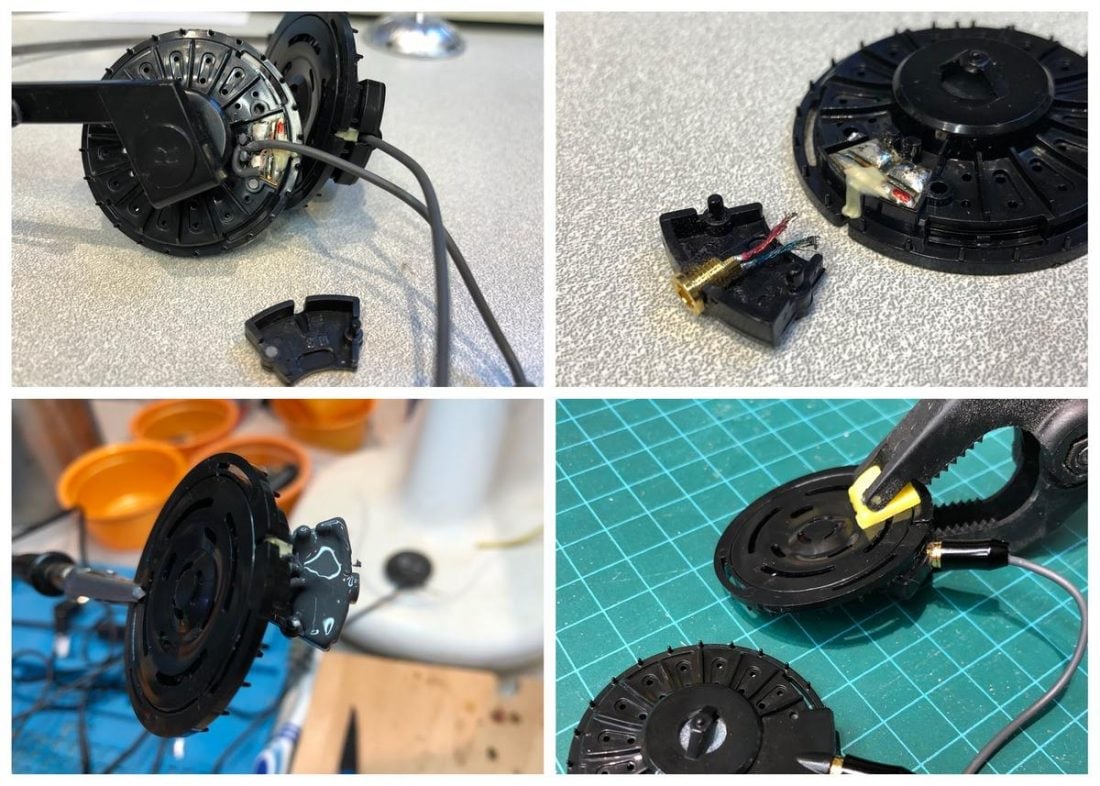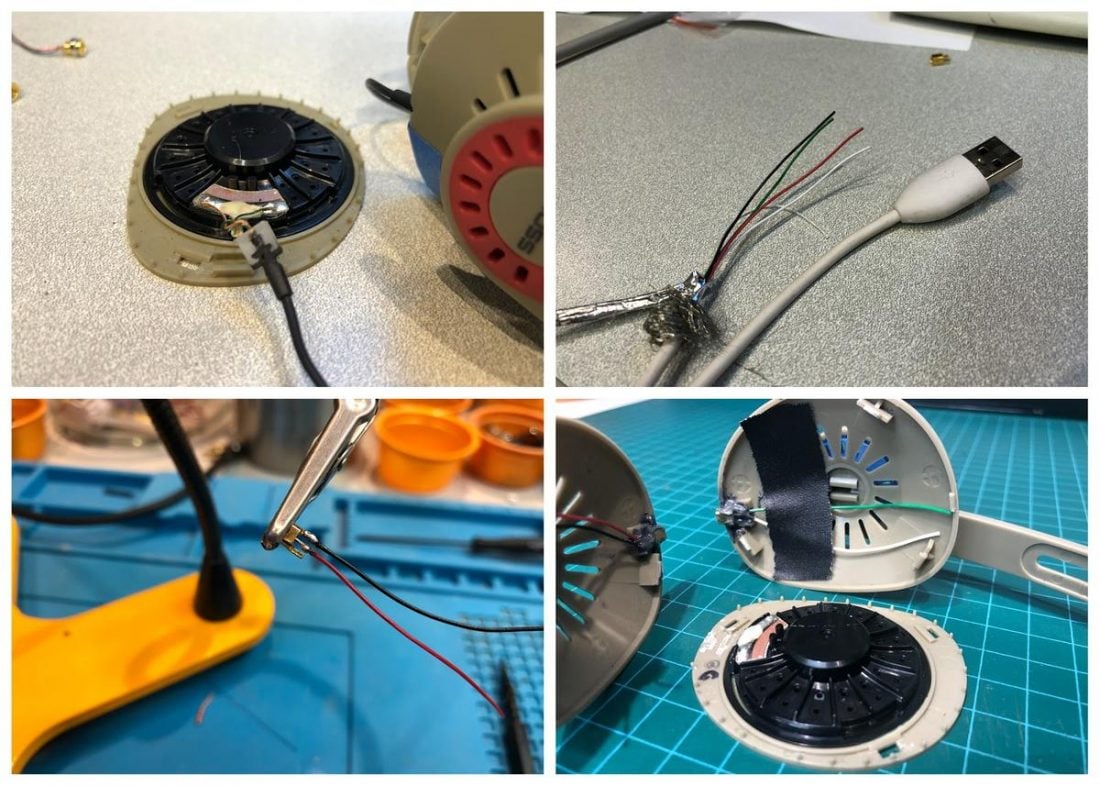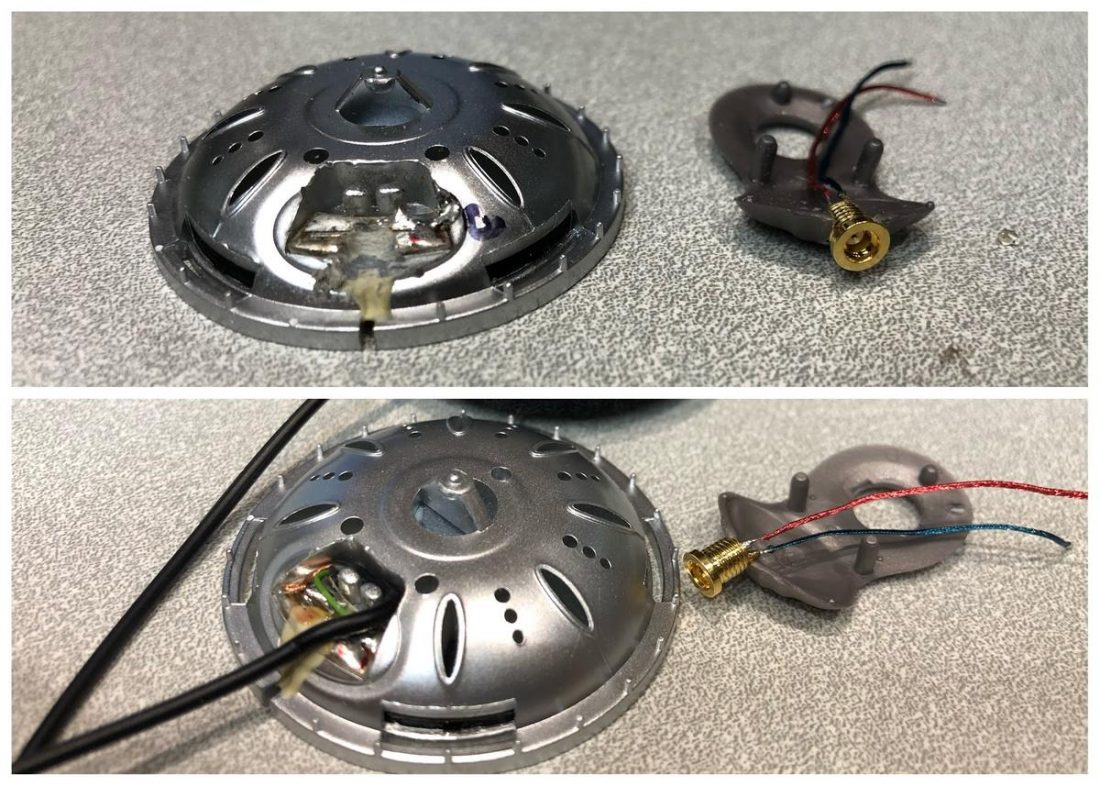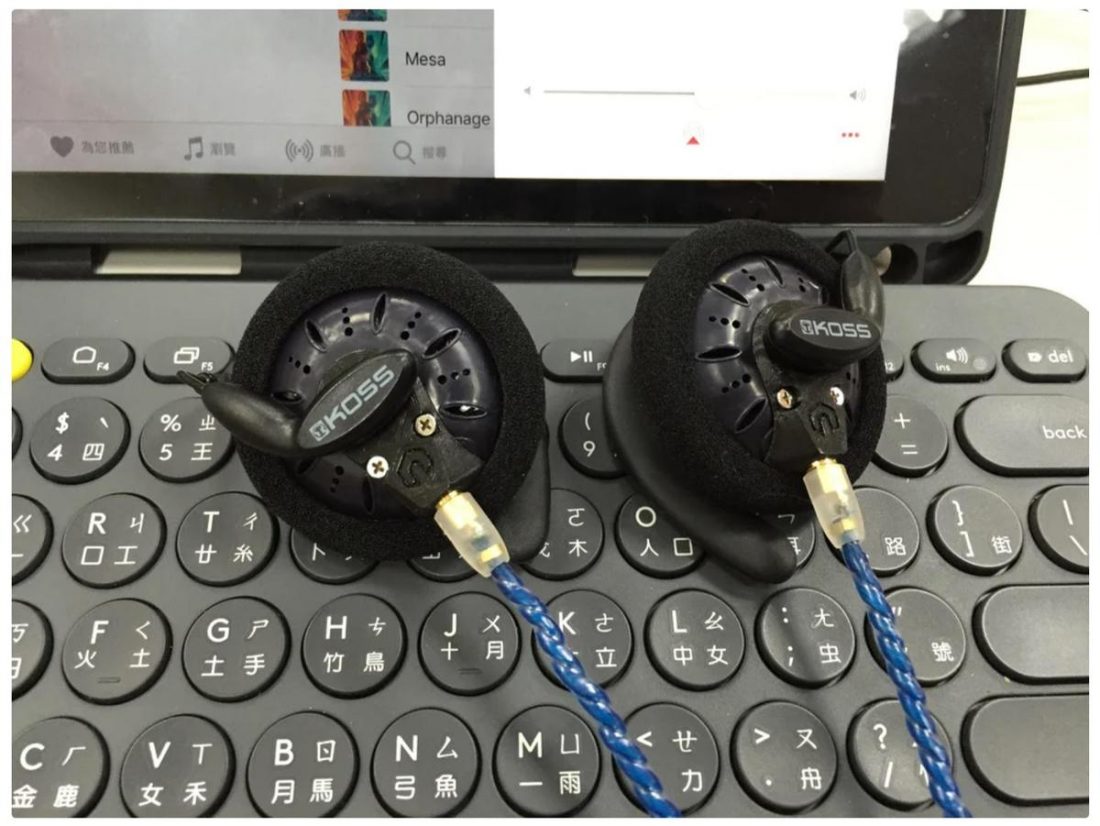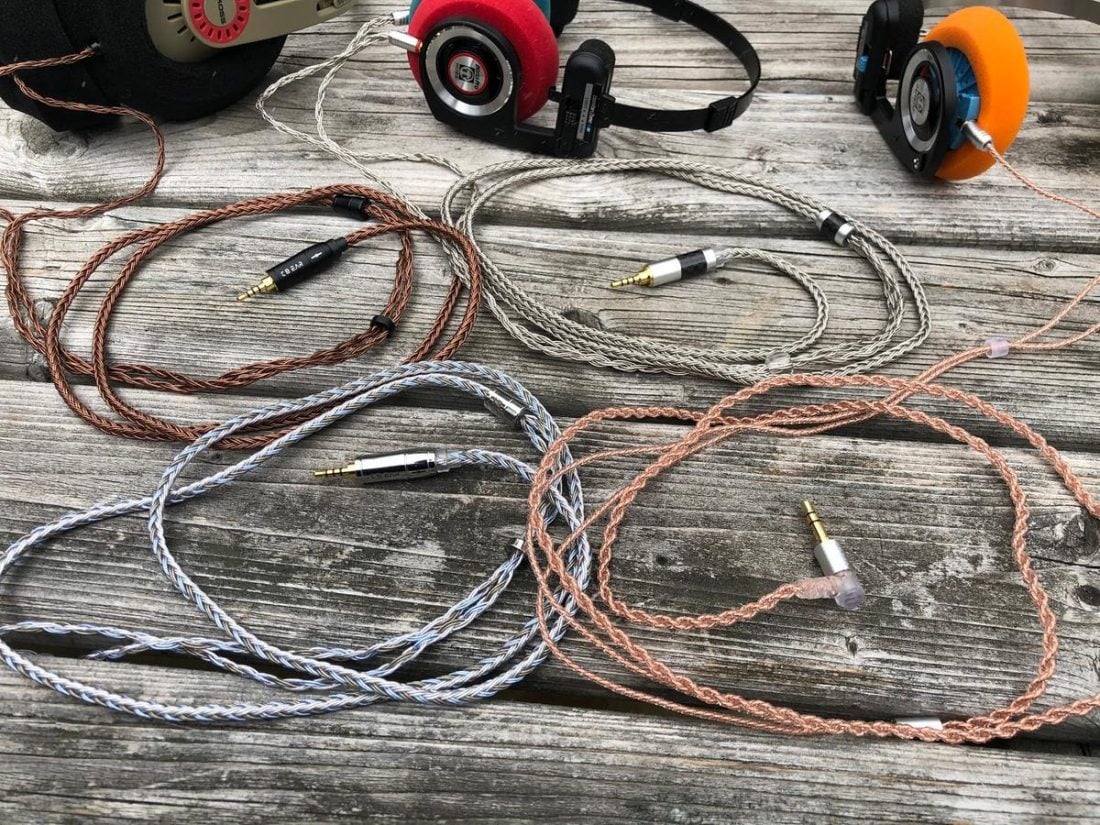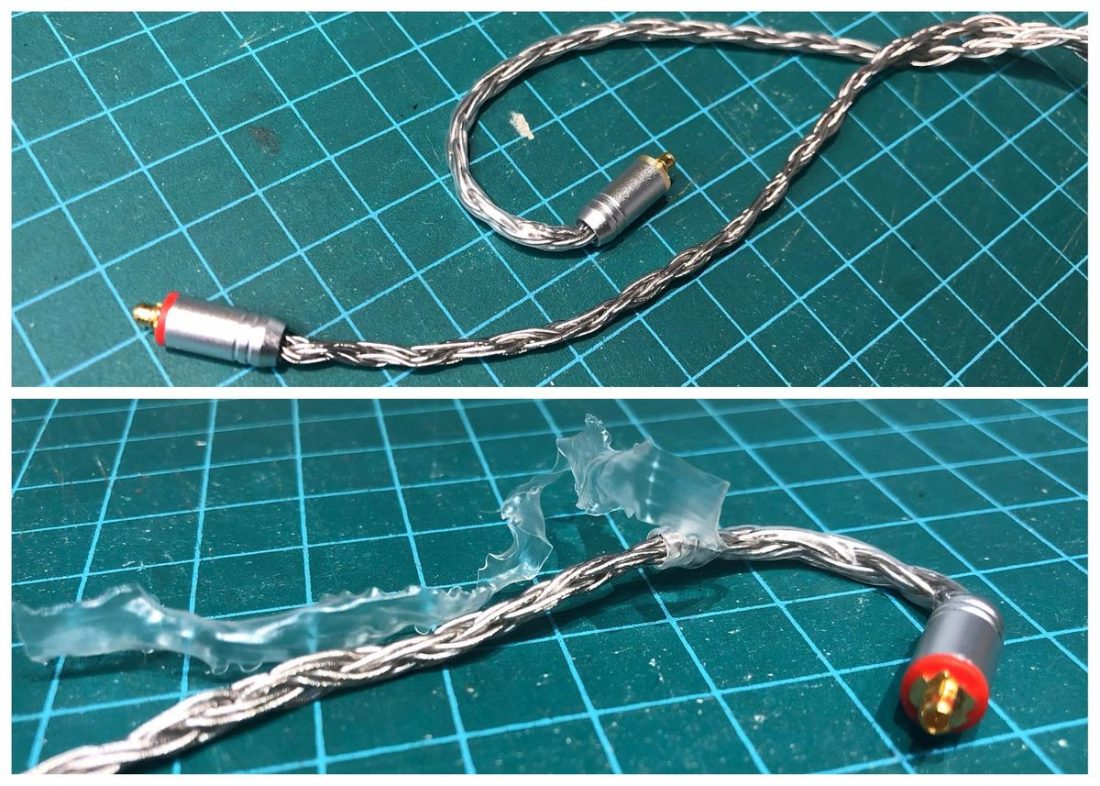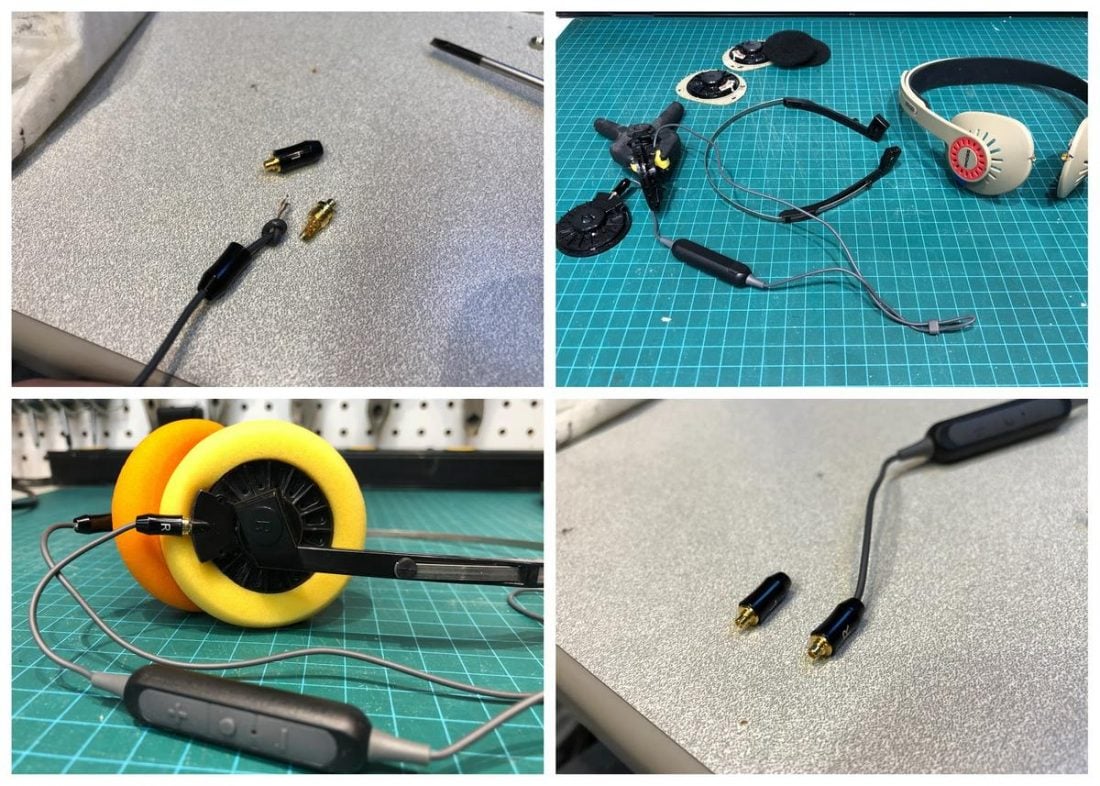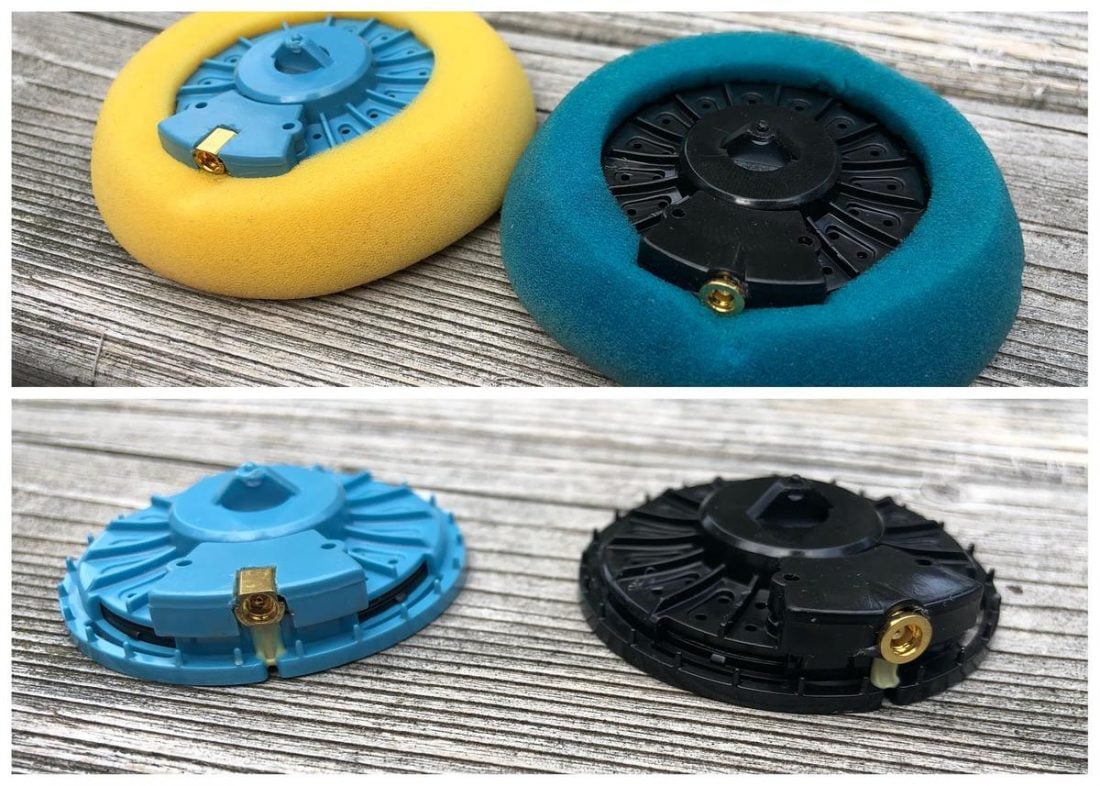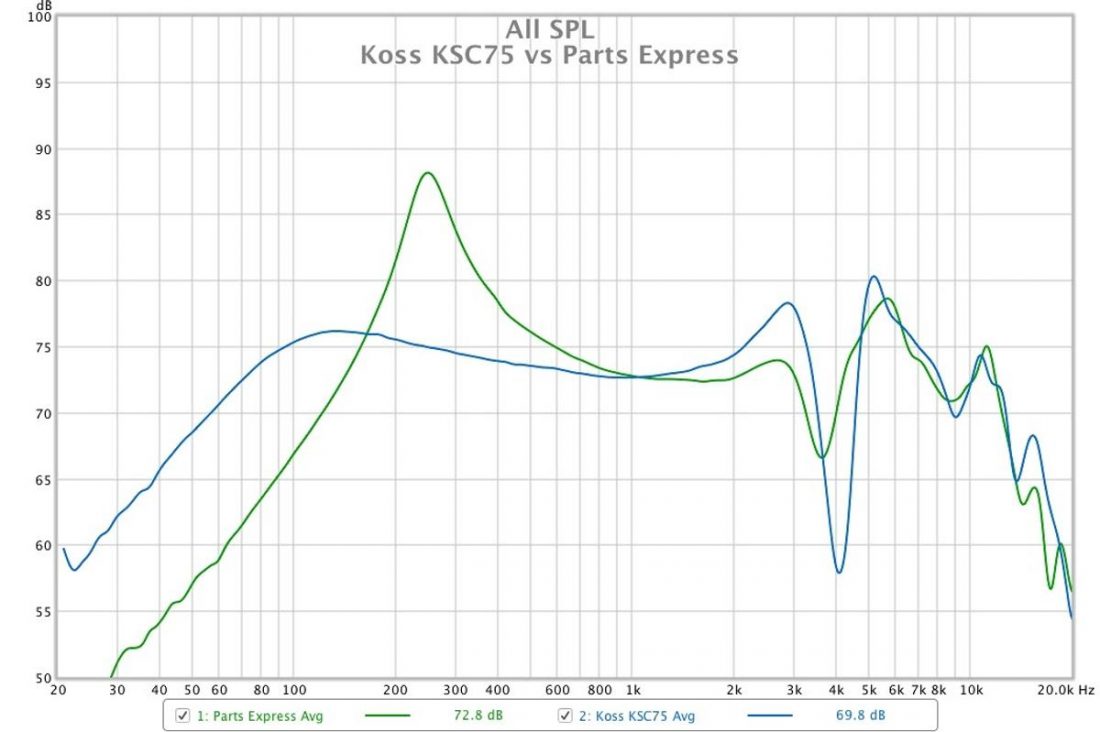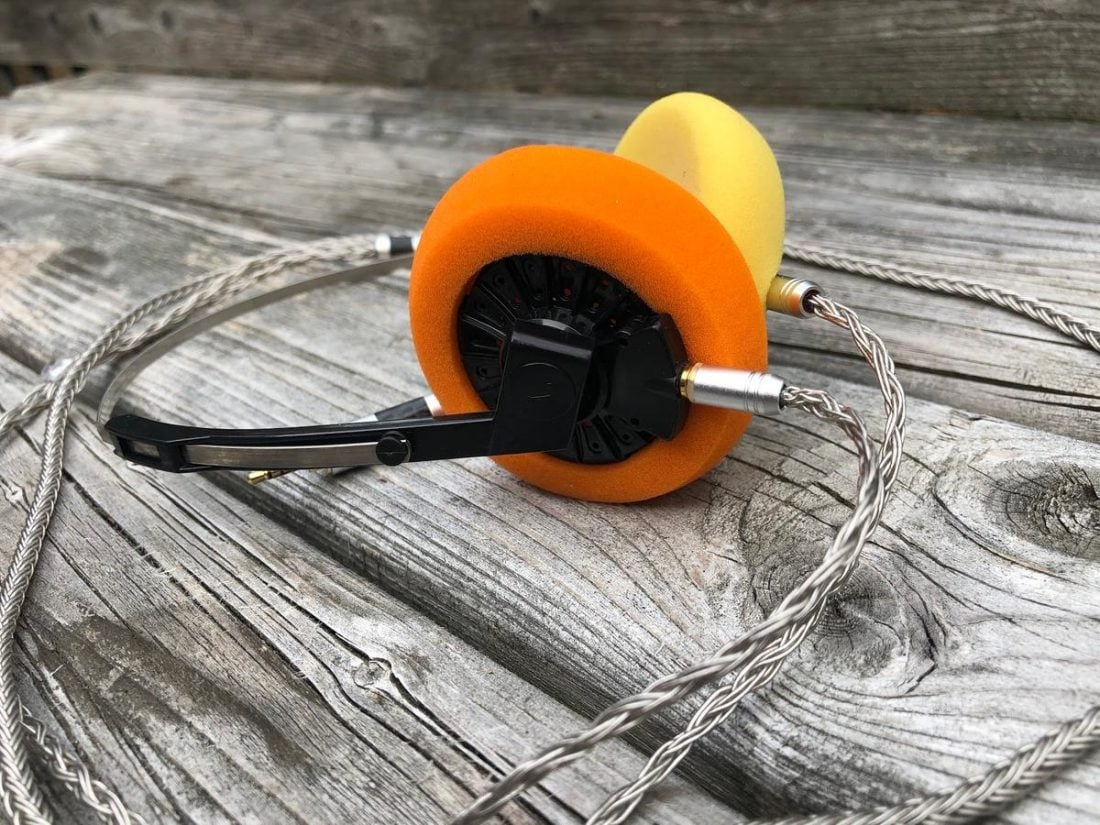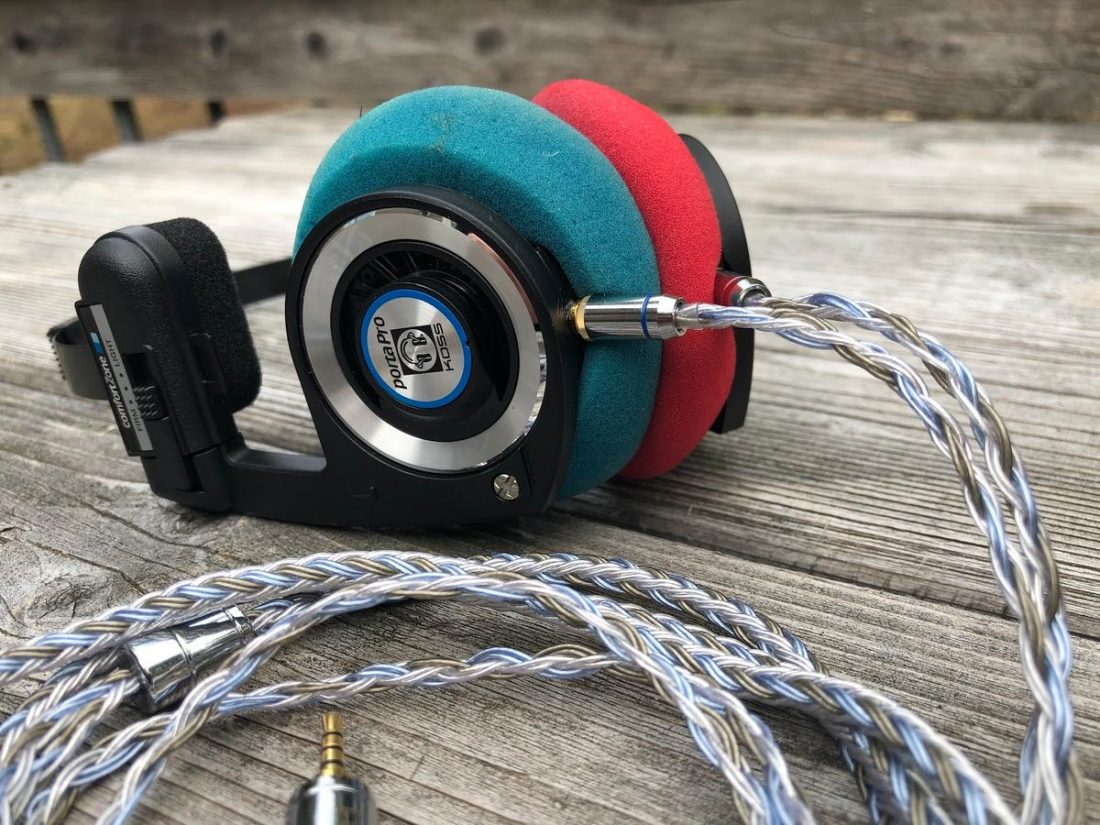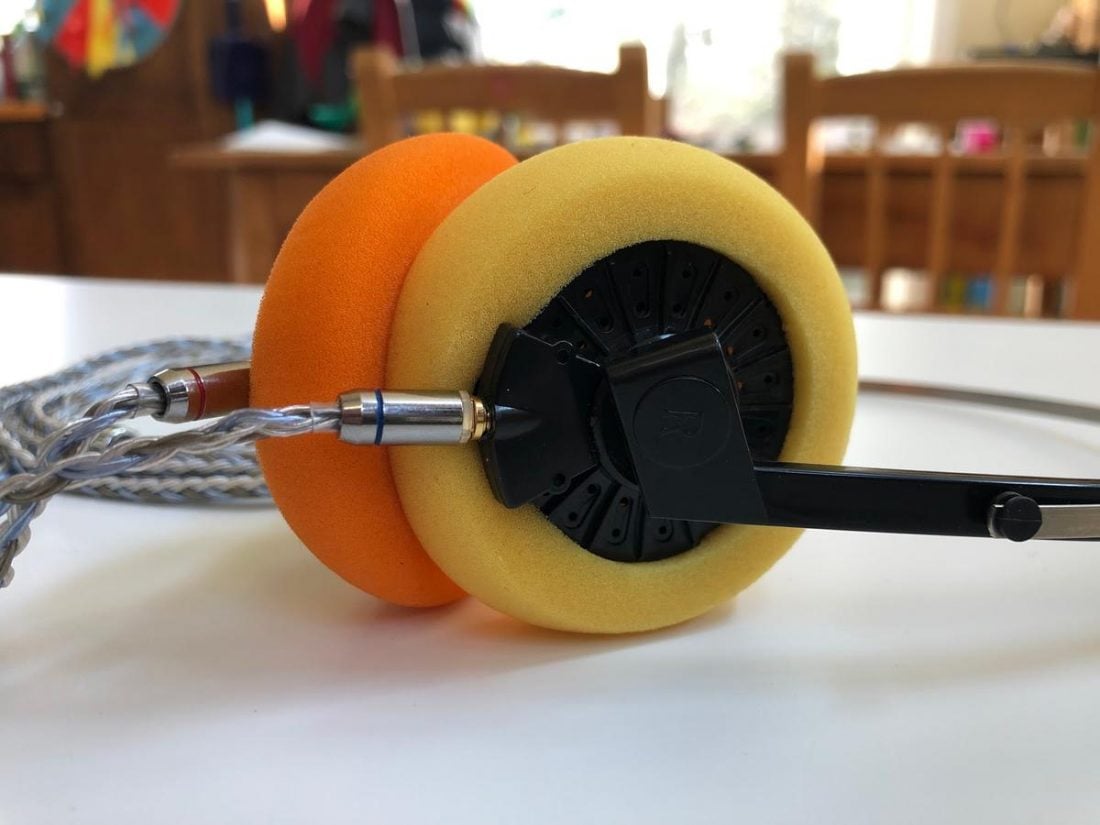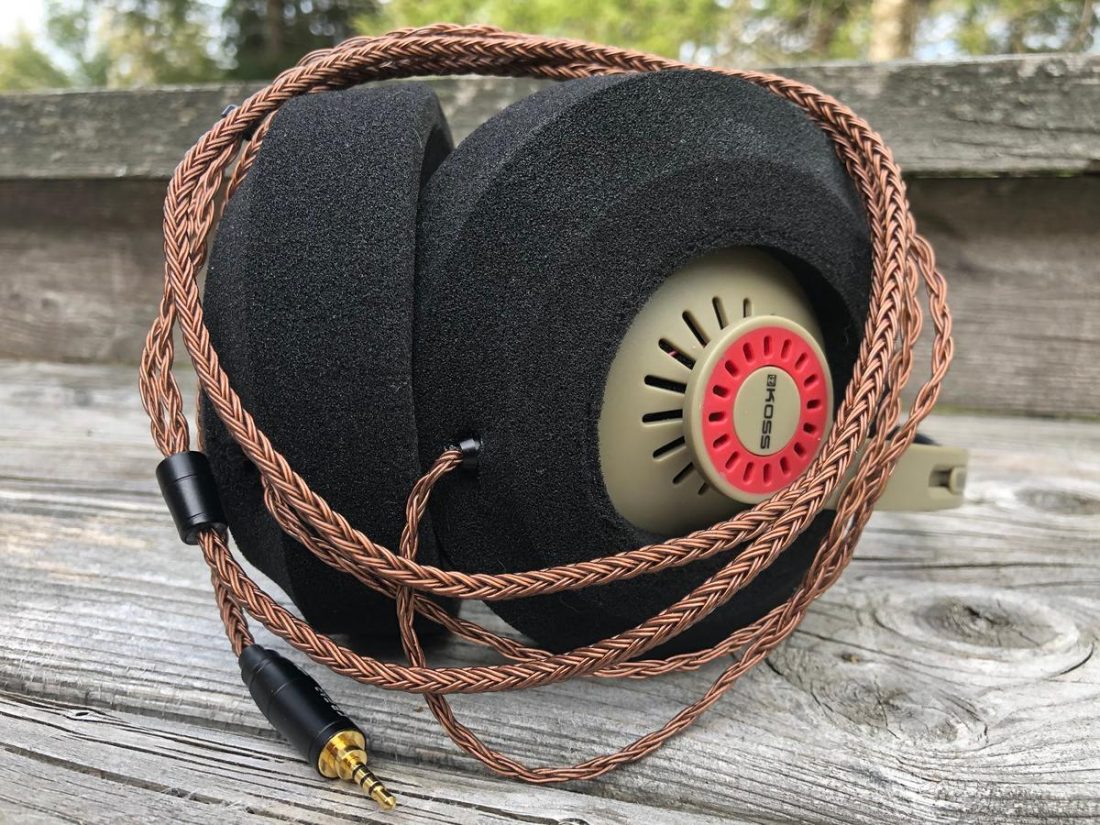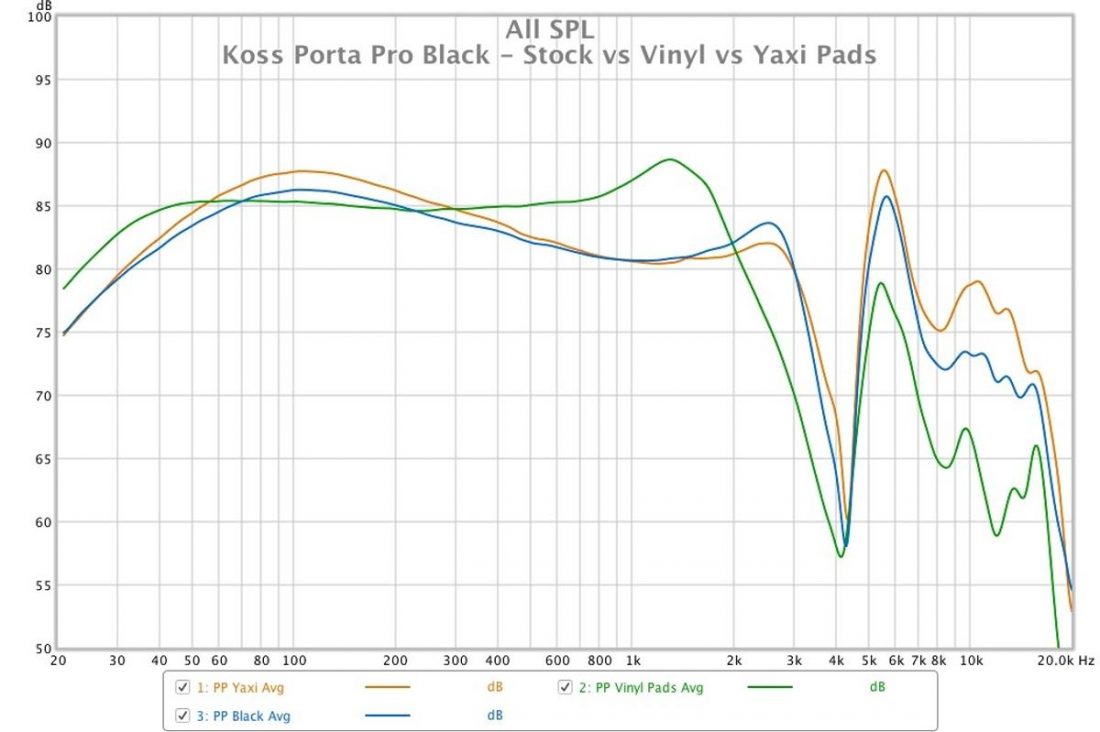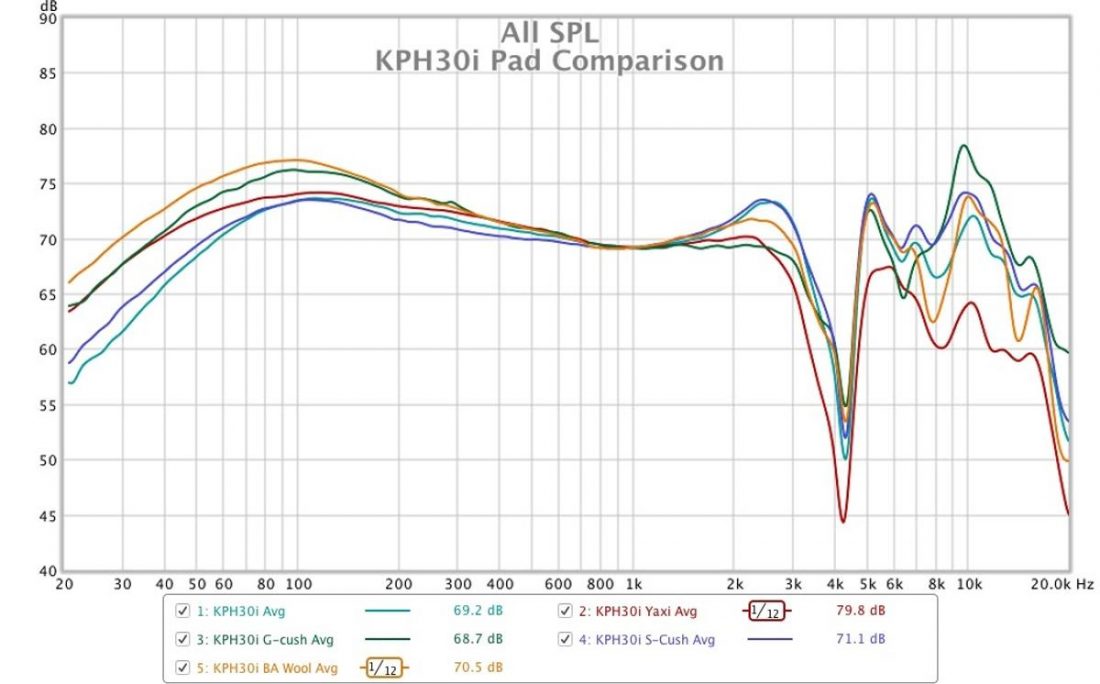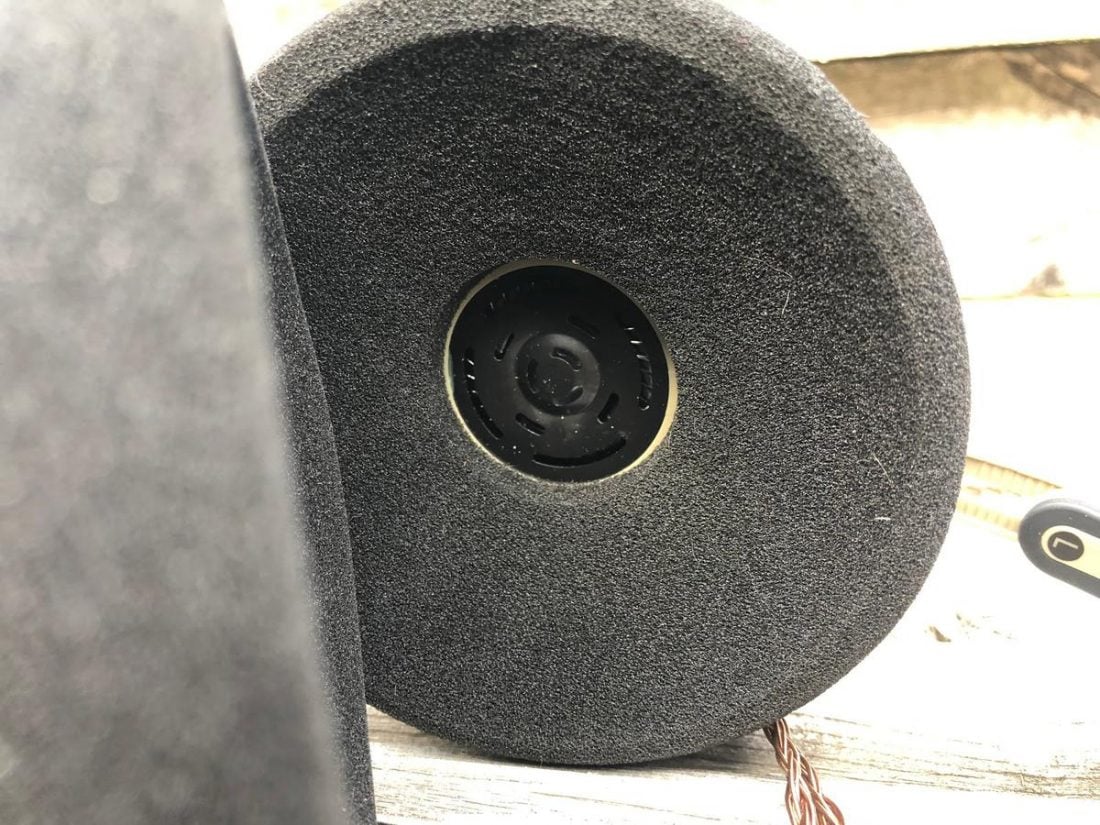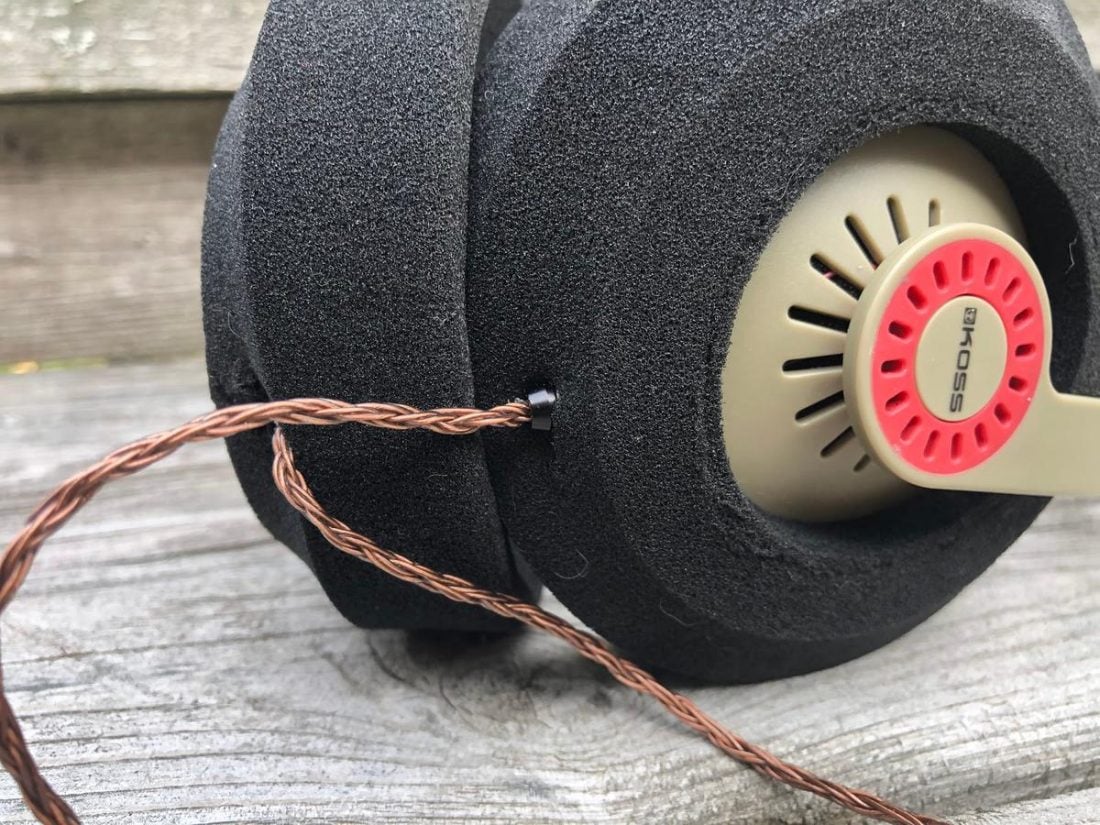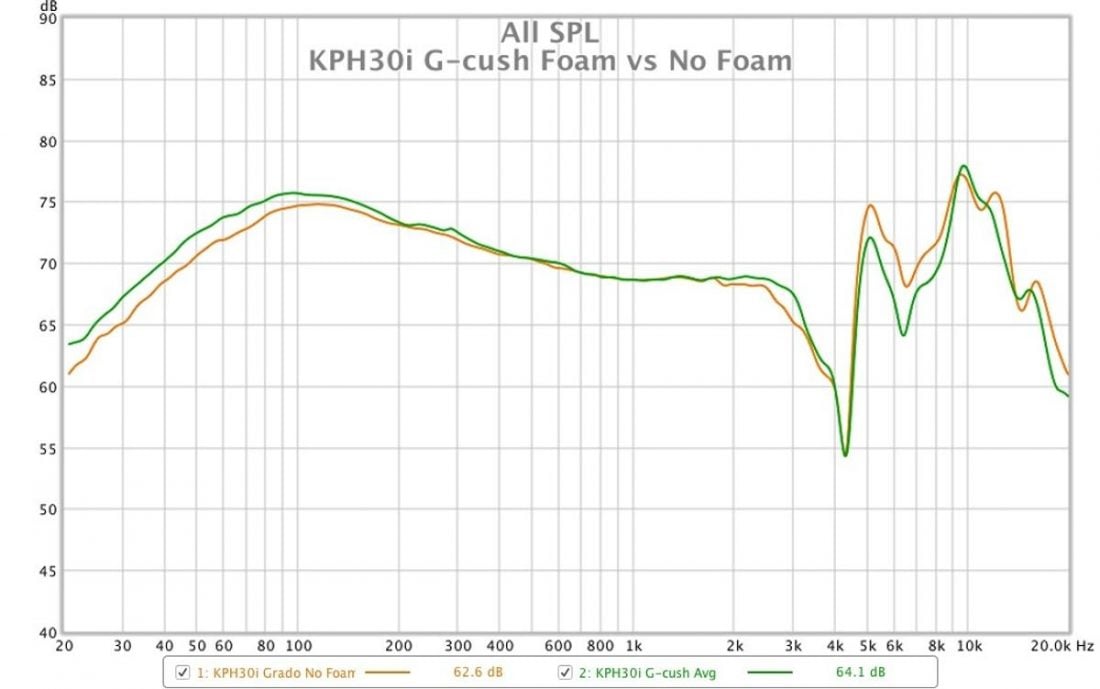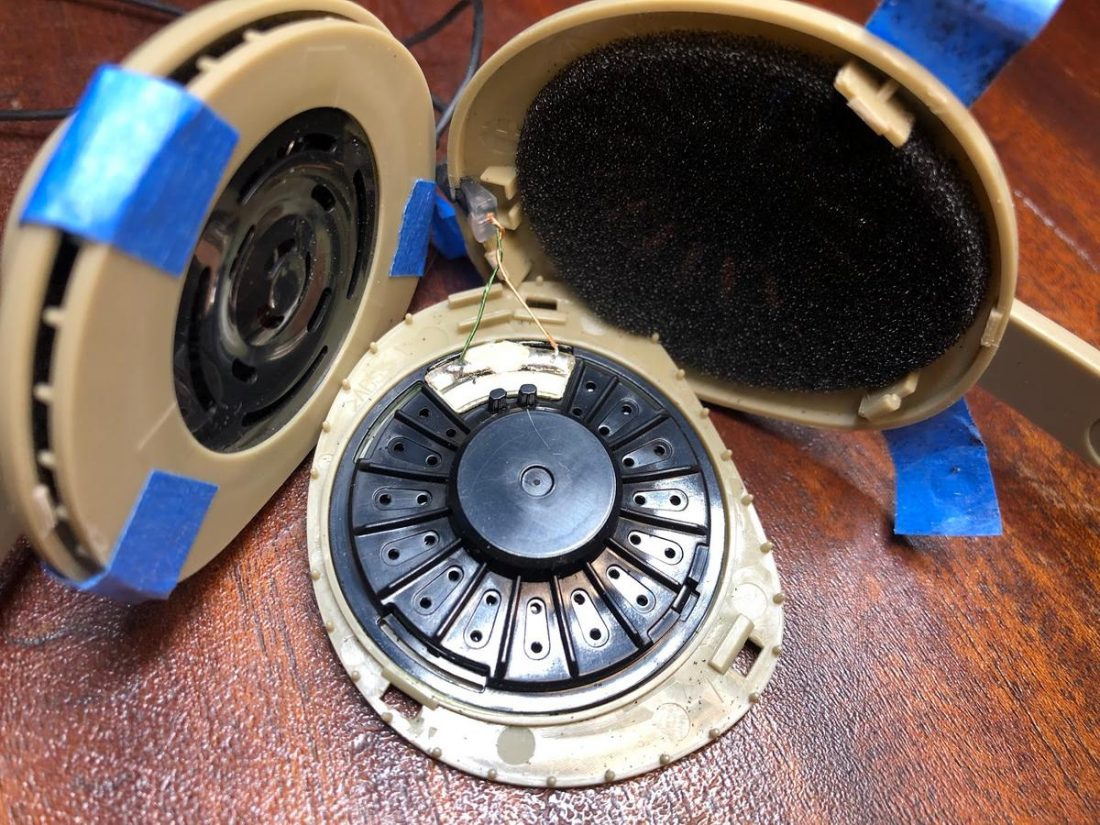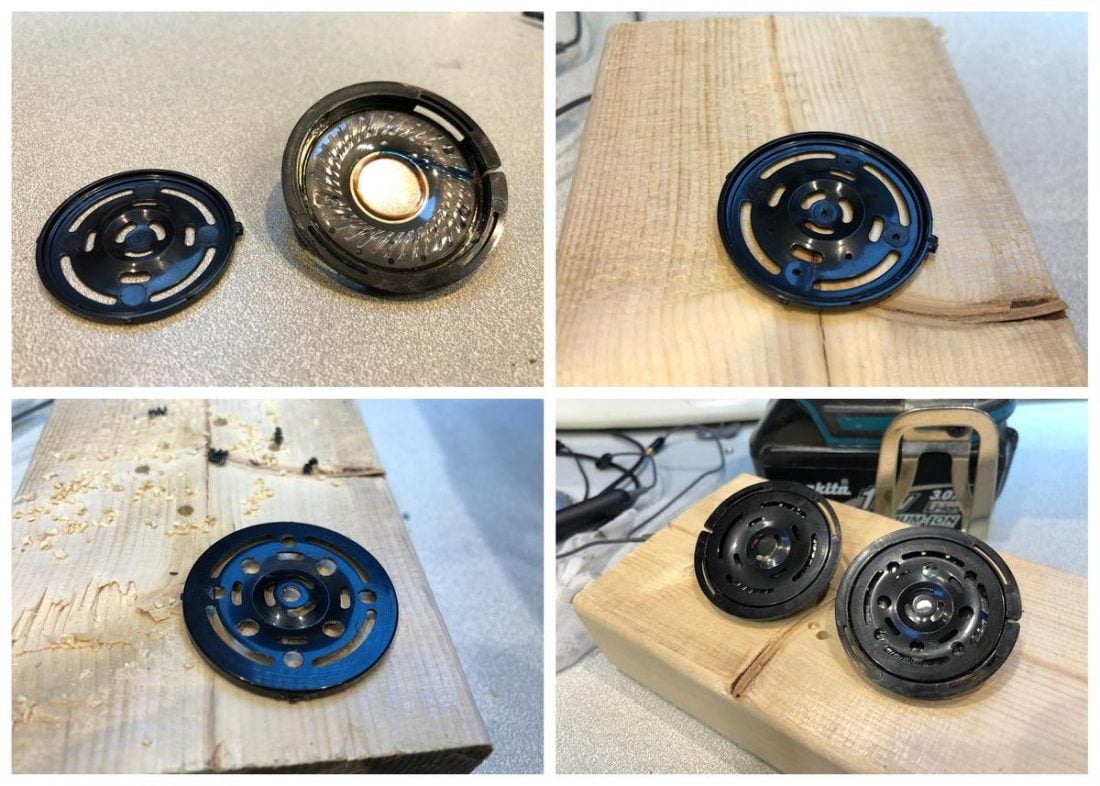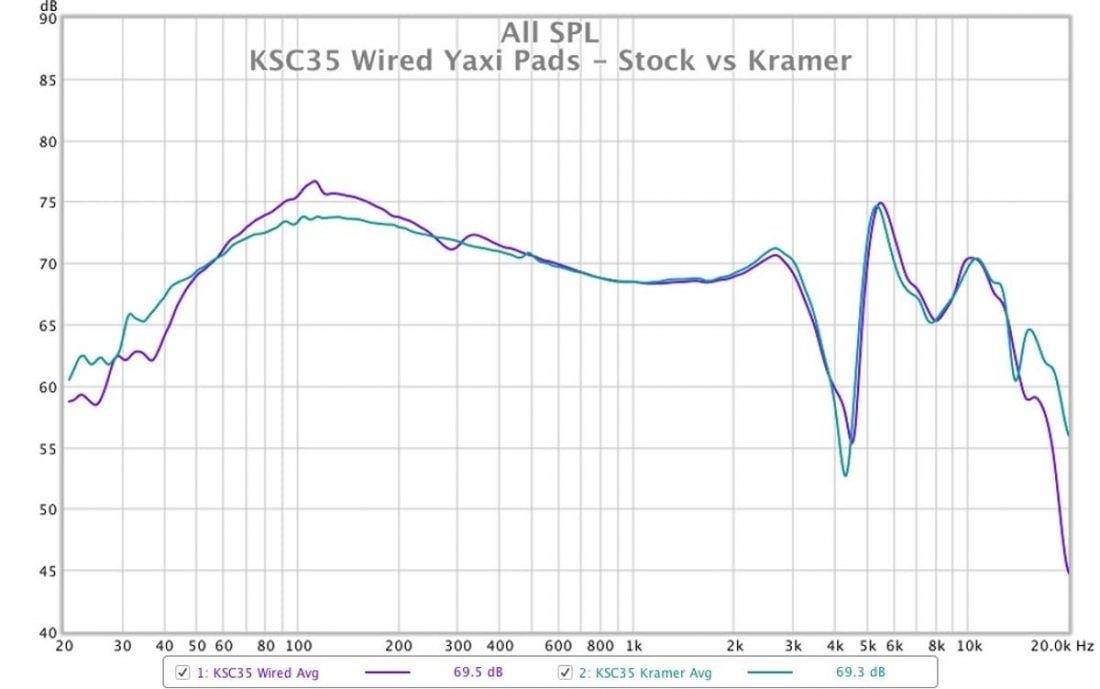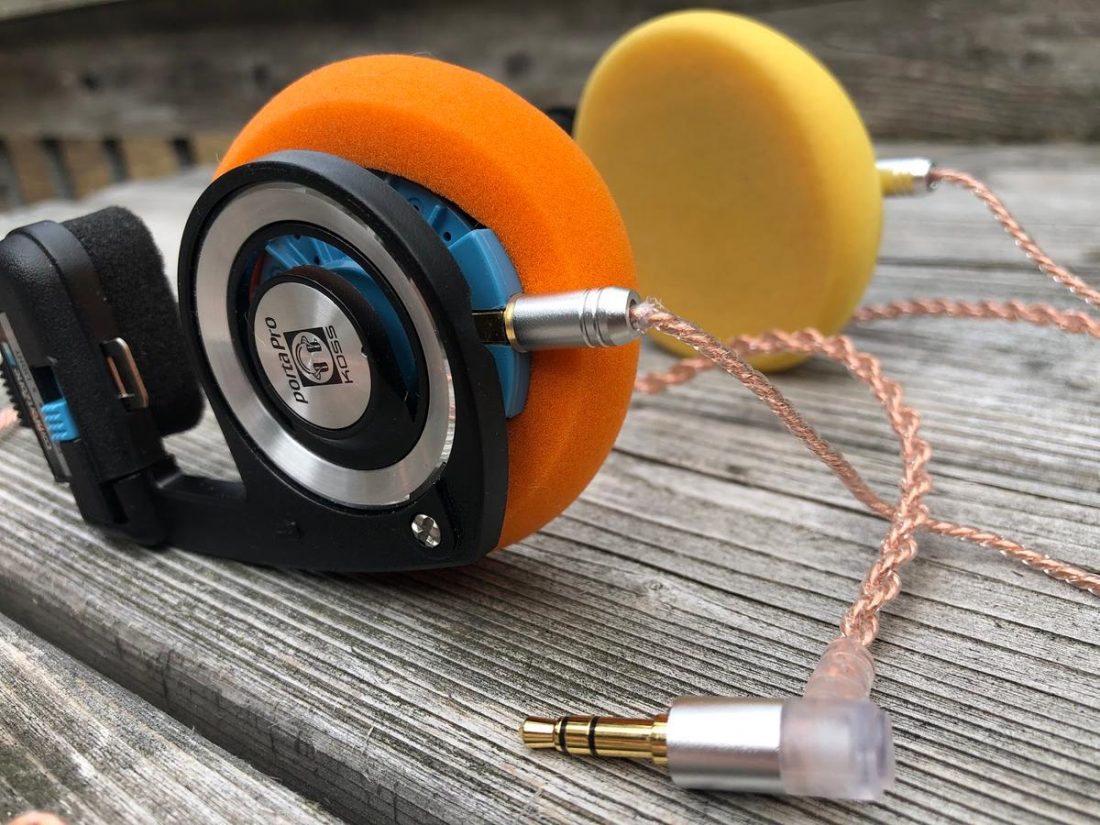Every few years, a new group of headphone enthusiasts discovers the least well-kept secret in portable audio. Brace yourself. The truth will blow your mind.
- Gasp * I know, right? Shocking! The latest iteration of these enthusiasts calls themselves #KossGang. Those of us with a few grey hairs, might remember that these great-sounding and inexpensive headphones have been around for a year or two, err…, decade or three. Doctor, set the Tardis to the fantastical year 1984, and let’s see what Koss is up to. Literally the year before ‘Back to the Future’ made it into theatres, Koss released their most successful product of all time. The iconic staple in the headphone universe known as the Porta Pro. With just the right amount of shiny silver highlights, blue and black plastic, and unique folding shape, the Porta Pro fit right into Walkman culture. But like every other electronic product that has disappeared from that era, the Porta Pro would have vanished into our nostalgic past, if not for one important distinction. Their new 35mm, 60-ohm drivers sounded great. Great for the time, and as it turns out, they still sound great 37 years later. I can think of no other audio product that not only has lasted so long, but still is oft recommended by audio enthusiasts. Curious as to my personal desert island, ‘you can have only one,’ headphone choice? The Porta Pro all the way. So, like any company with an unmitigated success on their hands, Koss pulled a Marvel Universe, long before the Mouse House figured out this key to financial success. While this line of headphones is fantastic, there’s always room for improvement. Headphone modding enthusiasts love a great driver, low price, and the dreams of creating giant-killing franken-phones. Spoiler alert. I’m one of those enthusiasts. So today, we’re going to explore the popular Koss modifications. I’ll detail how to do them, and we’ll take a look at how the results measure and sound. We will be focusing on the Porta Pro, KSC35, KSC75, and KPH30i. Throw caution to the wind and grab your soldering iron!
Koss Modification Overview
Headphone modifications fall into three general categories (with some overlap): The one thing we won’t be modifying is the driver itself. The ear pads, band, grills, and cups are all fair game, though. Let’s be clear about the price. The Koss headphones we will be modifying today are all sub $50 USD. Modifications that multiply their cost several times are not my intention and simply do not make sense to pursue. We’re striving for bang-for-the-buck improvement, not throwing away money to achieve marginal enhancement.
Cable Modifications
Tools needed
Soldering iron + solder Tiny flat head screwdriver or spudger Epoxy or hot glue gun Dremel rotary tool with a small grinder bit X-acto knife or break-off utility knife Very thin wires MMCX sockets
Like with most inexpensive headphones (especially ones designed many years ago), the Koss cables are all dual-entry and fixed to the ear cups. That is to say, non-replaceable. Damage your cable, and you are going to have to take Koss up on that lifetime warranty. While all are entirely functional, they are of the ‘thin, black, plastic’ variety and have none of the appeal or bling that is the current hotness. For this write-up, I’m treating cable changes primarily as an aesthetic change. Many different cables are available with unique braid patterns, plugs, y-splitters, various wire materials (including silver and copper), and a rainbow of colors. For my thoughts on whether cables make a sound quality difference, check out this article. These Koss headphones are all a reasonably small, on-ear design. The cups are just big enough to contain the 35mm driver, so there is simply no space for mini-XLR, 3.5mm, or even 2.5mm sockets that other headphones employ. This means we need to look at IEM socket solutions. The tiny MMCX socket is sized small enough to fit and large enough to be worked with by the average DIY’er. There are two basic styles of female MMCX sockets readily available. One is a circuit board pin style, while the other is a threaded socket. Neither can be used as intended on the Koss headphones, but both can work well with a liberal application of epoxy to hold things together.
How to Add MMCX Sockets to the Porta Pro and KSC35
Steps
Adding MMCX Sockets to the KPH30i
Steps
Adding MMCX Sockets to the KSC75
The KSC75 is similar to the standard Porta Pro driver but have a unique cup shape and wire cover. Again, the wire cover simply pops off, but the KSC75’s more rounded cup shape makes adding an MMCX socket very difficult. Luckily some enterprising folks out there have created 3D printed wire covers made expressly for this purpose. There are many Koss modding 3D printed designs online. Use threaded MMCX sockets and follow the above steps to remove and replace the cables.
Cable Choices
This project was a great excuse for trying out some of the popular inexpensive IEM cables available from AliExpress. I wanted attractive, sub-$20, 2.5 mm balanced (when available) cables with MMCX connectors. Here’s what I ordered: The only thing you have to do is to remove the approximately 3” rubber heat-shrink type coating that curves the wire near the MMCX plugs. It’s there so that the cable naturally fits over and around the ear for IEMs. It needs to go since I’m going to use the cables with the downwards-facing sockets on the Koss headphones. To remove the rubber coating, very carefully insert the tip of an X-acto blade facing outwards between the wire and the coating. Cut a small slit until you have the beginning of a split in the coating. Then holding the coating and wire in each hand, pull apart to further tear the coating along the split. It will likely be necessary to use the knife again as the rubber will tear off as you go. Remove the rubber coating as close as you can go to the MMCX connector and use the knife to clean up any remaining bits.
Bluetooth cables
Another option for removable cables is Bluetooth. The wireless Porta Pro version is significantly more expensive than the base model, yet it is identical, other than including a (non-removable) Bluetooth module cable. Adding MMCX jacks to a regular Porta Pro makes adding Bluetooth a snap! (Yeah, pun intended.) There are several decent options for MMCX Bluetooth cables. I use both the Shure RMCE-BT2 pendant and the Shanling MW200 neckband. Both work well with the Koss headphones. However, as they are designed primarily for micro IEM drivers, the 60 Ohm, 35 mm driver is far more challenging for their internal amplifiers. Adequate listening loudness is achievable, but only near the Bluetooth module’s maximum volume. I modified the wireless version of the KSC35. A two-for-one deal! Not only did the KSC35 gain MMCX sockets, but I was also able to create a Bluetooth add-on cable by connecting MMXC plugs to the unsoldered wires. While the KSC35 Bluetooth module is clearly designed to power the Koss driver (it’s far more powerful than the above options), it’s definitely a step back from the one included with the wireless Porta Pro. The rechargeable lithium-ion battery life is only 6 hours, while the wireless Porta Pro lasts 12+ hours and supports higher quality aptX codecs.
Comfort Modifications
Headphone comfort modifications typically boil down to changing two things: If a pair of headphones are heavy, changing the headband, adding a comfort strap, or adding additional padding (such as the Dekoni Nuggets) may be necessary for improving comfort. There may be some change to the sound if the clamping force changes, but the influence would typically be fairly minimal. With the super-light range of Koss headphones, there is no reason to add a comfort strap or additional padding for comfort. However, the KSC35 and KSC75 are ear-clip style headphones. I’m not a big fan of this wearing style and prefer a good old-fashioned headband. Luckily many of the Koss headphones that share the same driver, also share the same headband mounting mechanism. This means we can easily swap out those ear clips for a compatible band. The mounting mechanism found on the KSC35, KSC75, and Porta Pro couldn’t be any simpler. The back of the driver has a small ball-shaped plastic protrusion. The matching band, or ear clip, has a socket that the ball clips into. It’s such an inexpensive but functional design that other companies, such as Parts Express, have created sub-$5 headphones with a compatible band. The Parts Express headphone drivers sound awful, but the simple band works well to maintain the light weight and to change the ear clip style headphones to a standard headband style. The low price and poor sound quality means we can dispose of the Parts Express drivers with minimal regret. Simply grasp the drivers firmly in one hand and the band in the other hand and pull straight out to unclip. To change the band, just reverse the process and pop the driver into the new band. Easy peasy.
Changing ear pads
The next step for improving how the Koss headphones feel on the head is changing the ear pads. While in stock form, the Koss headphones are quite comfortable, their thin foam pads are a bit scratchy and not quite thick enough. The standard Yaxi pads are available in red, yellow, blue, orange, black, and purple. Lots of options to make your Koss headphones look the way you want them to. Yaxi states that the pads will fit a variety of headphones.
Yaxi compatible headphone models
Koss PORTAPRO Koss SPORTAPRO Koss KSC75 Koss KPH30i Sennheiser PXC300 (discontinued) Sennheiser PX 200-II
While the Yaxi pads can be made to fit on the uniquely shaped KPH30i, using ear pads made for Grado headphones is an easier tweak. Fitting the large, bowl-shaped, G-cush style pads on the KPH30i have transformed them into one of the most comfortable headphones I’ve ever worn. These pads are my strong recommendation for the KPH30i. Changing the ear pads on any headphones changes the wearing comfort and has a major impact on sound quality. So, let’s move on to discussing how tweaking these pads changes the sound.
Sound Quality Modifications
Stock pads, Yaxi pads, Grado pads, or pleather pads? There is no shortage of options for pad rolling on the Koss headphones. Let me rule something out completely. The pleather pad options are THE WORST! In every sense of the word. They absolutely ruin the sound. The pleather pads sound flat, nasally, and awful. There is a huge new peak in the 1-2kHz frequency range and significant treble drop-off. Hard pass. Moving on to the better options, there’s only one real choice. Comfort is far improved. The Yaxi pads are thicker, softer, and by golly, they even sound better. They also fit the cups perfectly! The Yaxi pads add a touch more mid-bass and significantly more higher-frequency reproduction while maintaining the sound signature that makes the Koss driver so special. Better sounding. More comfortable. The Yaxi pads are a ‘must buy’ IMO.
KPH30i ear pads
The unique shape of the KPH30i makes them easier to fit Grado-style pads and far less easy to install Yaxi pads. I compared the stock pads to the Yaxi, G-cush (big bowls), S-cush (flat stock style), and some pricey Beautiful Audio merino wool L-cush (donut-shaped) pads that I have on hand. Interestingly, all the pads seem to have increased bass over the stock foams, with far more variance with the higher frequencies. While it appears on the graph (calibrated at 1KHz) that the Yaxi pads significantly decrease the treble response, I think it is fairer to compare the Yaxi pads as if they were calibrated at around 2.5Khz. To my ear, the treble response is more in line with the others, with a significant increase in bass and midrange. As expected, the large G-cush foams have a distinctive sound quality derived from their unique shape. First off, they do not have any foam between the driver and the ear, and the pre-cut hole fits the driver almost exactly. Secondly, they hold the drivers the furthest from the ear. Overall, I like their sound the most. Clear and bright without being sharp, the Koss drivers tend towards a more bassy signature, and the G-cush foams provide a great balance to the sound. And to my mind, the G-Cush pads are the most comfortable of all the Koss modifications.
Removing the KPH30i interior foam
Once I settled on the G-cush pads for the KPH30i, I decided to compare the sound with the interior foam pieces in place and removed. From the measurement graph, it appears that removing the foam lowers the bass a bit, and adds a bit of a peak around 5-6kHz. Since the overall signature of the G-cush mod is brighter, I settled on putting the foams back in. The audible differences were quite subtle.
Kramer mod
In 2005, a Head-Fi forum user going by the name Kramer5150 posted their list of modifications for the KSC75. The infamous ‘Kramer Mod’ was born! That’s it in a nutshell.
Tools needed
Snap-off utility knife Spudger (optional) Tiny flathead screwdriver (optional) Drill Awl 9/16” Drill bit
Steps
Kramer recommended cutting a hole in the ear pads to further allow sound to travel without obstruction. Finally, Kramer’s thoughts on the sound: My thoughts are that the results of the mod are far subtler than all that. The measurements seem to indicate a touch less mid-bass, which may result in a slightly brighter overall sound. For me, the Kramer mod is entirely optional, and I can’t say I noticed much change afterward, even when directly compared against non-modified drivers. Cymbal crashes are more separate from upper midrange guitars and keyboards. Kick drum bass seems to be more “airy”… has more depth to it, as opposed to a solid “thud”. The “thud” is still there, but theres a sense of air around theat fundamental note.” – Kramer5150
Conclusion
Do you have the interest enough to wade through thousands of words regarding modifying inexpensive Koss headphones, and you don’t currently own any? Then do yourself a favor and buy a pair and order the Yaxi ear pads. Full stop. Stop reading. Go do it now. The excellent Koss driver covered with Yaxi foam is not only ALL you need to do for modifications; it’s what you MUST do to enjoy this terrific line of headphones fully. Comfort and sound quality are undeniably improved. It’s often the most straightforward modifications that yield the most significant results. Sure, you can take it to the extreme and add MMCX sockets and replaceable cables, or add giant Grado pads to the KPH30i (and don’t get me wrong, it’s great fun to do so). But to hear the magic, there is a simple formula. Koss + Yaxi = happy. I love this Koss headphone lineup. I’ve owned Porta Pros for decades, and I will always own a pair, or two, or three, or…
